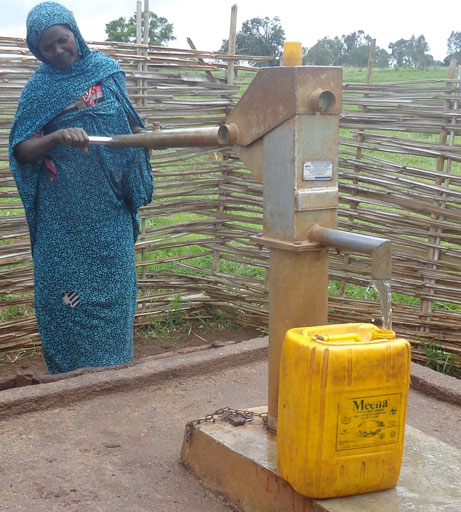12.4 Sanitary inspection of the home
Good-quality water can be supplied by water utilities but there is potential for the water to become contaminated by the user through using unclean water vessels for collection of the water, and poor handling (for example, by not storing the water carefully, and using contaminated containers to take water from the storage vessel).
What are the characteristics of a good water storage container in the home?
A container made of opaque non-degradable plastic (plastic that will not deteriorate with time); with a maximum capacity of 25 litres; with handles and a flat bottom, for easy carriage and storage; with a screw-cap; and fitted with a tap.
As you know, water is said to be safe to drink when it is free from pathogens and from physical and chemical contaminants. This needs to apply right up to the point when the water is ingested. Identifying and assessing the potential risks associated with the collection and use of water is therefore a very important part of the inspection.
If you were conducting a sanitary inspection, you would need to ask users or observe their practice on:
- how they collect the water (Figure 12.3) and the types of vessel they use (for example, jerrycans, buckets or pots)
- how the vessels are handled and stored when not in use
- whether the vessels are used for purposes other than water collection that may contaminate them
- whether users know how to collect safe water and keep it safe
- whether the water is treated or disinfected after collection
- hygiene practices of users (especially those of young children).

12.3 Sanitary inspection of rainwater collection and storage
